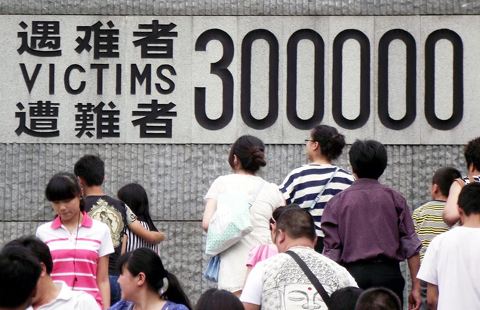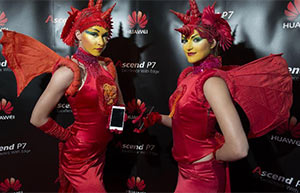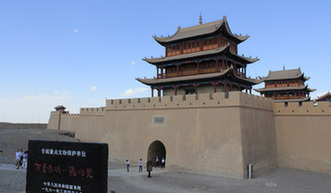Strokes of genius
By Xiao Xiangyi ( China Daily Europe ) Updated: 2014-07-04 08:13:13
|
Yang's painting, Dr Andrew, was completed in 1997. Photos Provided to China Daily |
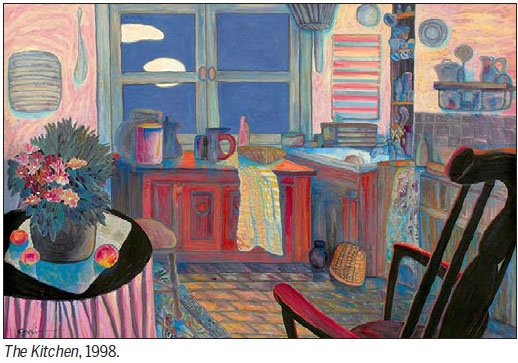
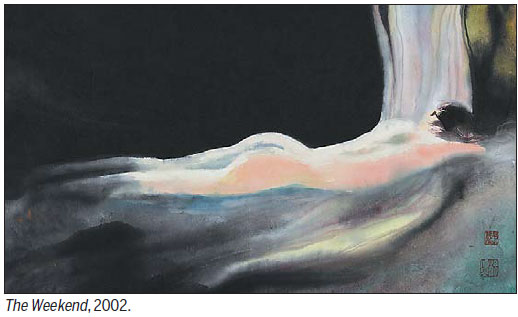
One of China's most acclaimed ink wash artists talks of how his use of color has modernized this most traditional art form
For modern artists and critics who are looking for something appealing to a more universal audience, traditional Chinese painting, especially ink wash painting, has been a bit too self-entertaining, with few artists rising to the same international esteem of their counterparts in the West.
For centuries, its most famous artists - who relied solely on very distinctive contrasts of light and dark, tone and shade, achieved by varying densities of just black ink - have consciously or unconsciously worked hard at finding a "way out" for their work.
This "ink wash" type of painting was often practiced by highly educated scholars, or literati.
Artist Yang Ermin, 50, has managed to succeed in giving this most traditional of art forms more of a modern look, by adding unconventional splashes of brighter color.
An exhibition of Yang's new ink wash paintings, titled "The dream of the future", will be held this weekend in Lodeve, a cathedral town in the Languedoc-Roussillon region of southern France.
Unlike more-durable canvas, which can carry thicker layers of oil paint, rice paper used in ink wash painting is thin, fragile and much less absorbent.
It can easily become either smudged or torn when painted with colors.
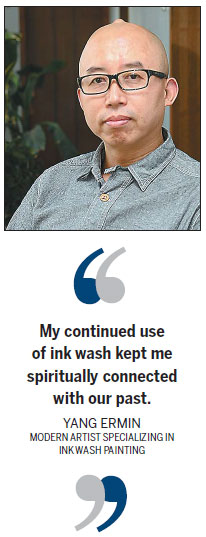
Yang, as he puts it himself, buried his head in rice paper like a farmer working on an experimental field, as he looked for new techniques that challenged what for some was a mission impossible - to bring color to ink wash. "This ancient country of mine had actually contributed very little to the art world, in modern times," says Yang, who was born in Hebei province in 1964.
Learning art from childhood, Yang says he often ponders over how ancient Chinese culture, could now be better shared with everyone.
"I was so bored with some of the lifeless stereotypes that were being used - I was miserable," he recalls.
When the '85 New Wave Movement' arrived - an avant-garde movement that flourished in China between 1985 and 1989 - he embraced it.
The expression was first coined by critic Gao Minglu and it represented for many a unique shift in Chinese art.
It was the beginning of a reinvention of art in China, which had been eroded by decades of political turmoil that had effectively cut off the country from the rest of the art world.
Li Xiaoshan, an art theorist and critic at the time, published what he called his "view of contemporary ink wash painting", in which he wrote that this most traditional of Chinese practices had effectively died.
He described how enormously disturbing that should be to the modern art world, and his words really struck a cord with Yang.
"People were still drawing the same things that painters had in the 18th or 19th century.
"They were drowned in tradition, but art should never be allowed to lag behind society," he says.
Yang said he took his lead from what people were telling him at the time. He remembers talking to a vegetable vendor, who realized he was a painter and who told him that he did not like ink wash.
"I was shocked when he told me that ink wash was just too difficult to understand. He said he loved the bright colors of oil painting.
"I was shocked because he said he felt that ordinary Chinese were abandoning their own culture and embracing western art. The cornerstone of our very own art world was collapsing."
But Yang did not immediately turn to oil - he stuck to his roots. He kept with ink, brush and rice paper, all of which were made in China.
Many in fact thought he was using oil, acrylic or even watercolor.
"I tried oils, yes, but acrylic and watercolor just don't achieve the same feeling as ink," Yang says.
He stuck rigidly to the traditional thin lines of ink wash painting, but his big change came in his use of color. He gave the traditional, a distinctly modern feel.
It was very different to what was then being tried in Japan, which along with Korea and China was a traditional home of ink wash painting.
There, its ink wash artists were abandoning ink wash altogether, along with the use of rice paper, turning instead to delicate, smooth ceramics, on which it was easier to layer thick colors.
"Traditional Japanese art was adapted to the development of industrial technology," he says.
"My continued use of ink wash kept me spiritually connected with our past, while those new Japanese painters were being led towards new technology and factories."
"To me, that's not what art should look like, or be about."
The art critic Antoine Terrasse once wrote of fellow-French painter Pierre Bonnard, "when one covers a surface with color, you have to be able to start the game anew, to constantly find new combinations of form and color to fulfill the demands of emotion".
Marie Laureillard, a professor at the University of Lumiere-Lyon 2 in France, says that what Yang has done is try to "recast Chinese ink wash" by painting through the clear richness of color.
"For him, as much as for Bonnard, the exultation of color seems to be guided more by the state of mind than by caring about mimicry."
To the observer, his works may appear to have been influenced by Western artist such as Monet.
Having settled in Japan 20 years ago, Yang now also spends much of his time in the United States, but he actually finished his first "new" ink wash painting in Baoding, Hebei province, in 1992.
"The experience of settling overseas has certainly influenced me indirectly," he says.
Over the past two decades he has held solo exhibitions in many countries including Japan, the US, Italy, France and the Netherlands.
"Artists overseas tell me they envy me as they say everything I do is still very closely related to traditional Chinese style, while they themselves feel isolated from their own art history," says Yang. "I take this as a real compliment."
"However, some in China do still say my works are more Western in their feel."
Yang seems to have an acute ability to capture and express Zen in his work.
His use of color is conciliatory, it pleases, it reconciles, but it never contradicts.
"That's what ink wash is good at: being hazy and implicit. We don't want to lose any of our traditional Chinese flavor, like the gentle outlines of oriental faces and figures, or the faint aroma of tea."
His works are never limited to any topic - just one central theme of tranquility, he says.
Or as Marie Laureillard says: "With Yang's delicate brushwork, all these scenes that might seem banal are magnified, creating an explosion of colors, whose poetry and refinement draw us in."
xiaoxiangyi@chinadaily.com.cn
|
|
|
|
|
|
|
|
European Weekly
 We will not give up search, Li vows
We will not give up search, Li vows
International hunt for missing airliner continues after fruitless six-day search




